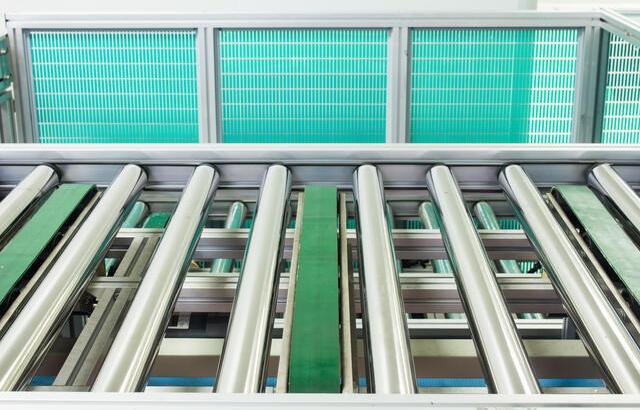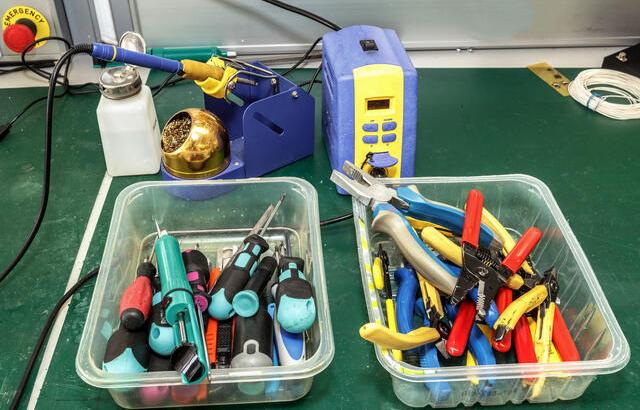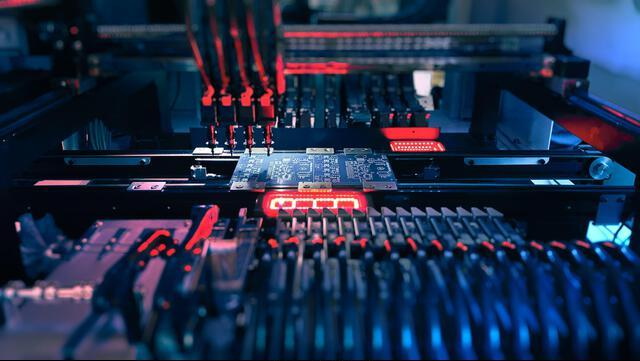Content Menu
● Solder Paste Application Issues
● Component Placement Challenges
● Thermal Management
● Quality Control and Inspection
● Supply Chain Management
● Process Optimization
● Equipment Maintenance
● Workforce Training
● Conclusion
● FAQ
>> 1. What are some common defects found in SMT assembly?
>> 2. How can I prevent solder bridging during SMT assembly?
>> 3. What role does thermal management play in SMT assembly?
>> 4. Why is quality control important in SMT assembly?
>> 5. How can supply chain issues impact SMT production?
● Citations:
Managing a PCB Surface Mount Technology (SMT) line involves navigating a labyrinth of challenges that can impact production efficiency, product quality, and overall operational costs. As the demand for smaller, more complex electronic devices continues to rise, so too do the challenges associated with SMT assembly. This article delves into the common challenges faced in managing a PCB SMT line, providing insights into their causes and potential solutions.

Solder Paste Application Issues
One of the most critical steps in the SMT process is the application of solder paste. Inconsistent or insufficient solder paste application can lead to various defects such as:
- Insufficient Solder Joints: This occurs when there is not enough solder paste applied to the pads, resulting in weak electrical connections or open circuits. Insufficient solder can result from clogged stencil apertures or improper paste thickness during printing.
- Solder Bridging: Excessive solder paste can cause bridging between adjacent pads, leading to short circuits. This issue often arises from poor stencil design or misalignment during the printing process.
- Solder Balling: This defect occurs when small spheres of solder form on the PCB surface due to moisture contamination in the solder paste or improper reflow profiles. Solder balls can create deceptive connections between adjacent leads, causing functional issues within the circuit.
To mitigate these issues, it is essential to implement high-quality stencil designs and ensure proper alignment during the printing process. Regular cleaning of stencils and using automated solder paste inspection (SPI) systems can help catch defects early in the production line.
Component Placement Challenges
Accurate component placement is crucial for ensuring the performance of the final product. Common challenges include:
- Misalignment: Components that are not placed correctly can lead to short circuits or open circuits. Misalignment often results from inaccurate pick-and-place machine calibration or programming errors.
- Tombstoning: This defect occurs when one side of a component lifts off its pad during reflow, typically due to uneven heating or improper placement. It is particularly common with small passive components.
- Skewed Parts: Components may be skewed during placement due to improper nozzle selection or inadequate machine calibration, leading to poor solder joint quality.
To address these challenges, it's vital to maintain precise calibration of pick-and-place machines and implement thorough inspection processes after placement but before reflow.
Thermal Management
Thermal management is another significant challenge in SMT assembly. The reflow process requires careful control of temperature profiles to ensure proper soldering without damaging components.
- Temperature Variations: Inconsistent heating can lead to cold solder joints or thermal damage to sensitive components.
- Heat Sink Design: Components that generate significant heat may require additional thermal management strategies, such as heat sinks or thermal vias.
- Environmental Conditions: High humidity levels can lead to issues like solder paste slumping and bridging during reflow. Conversely, low humidity can cause flux evaporation, leading to insufficient solder joint defects.
To improve thermal management, it's essential to optimize reflow profiles based on component specifications and use thermal simulation tools during the design phase. Monitoring environmental conditions such as humidity and temperature is also crucial for maintaining optimal soldering conditions.
Quality Control and Inspection
Quality control is paramount in SMT assembly to ensure that defects are identified and addressed before products reach the market. Common quality control challenges include:
- Defect Detection: Identifying defects such as solder shorts, opens, and misalignments requires sophisticated inspection techniques. Traditional visual inspection may not be sufficient for detecting issues in densely packed boards.
- Rework Complexity: Once defects are identified, reworking them can be challenging due to limited access to components and the risk of damaging adjacent parts during repair.
- Testing Procedures: Implementing effective testing procedures such as automated optical inspection (AOI), X-ray inspection, and functional testing is essential for ensuring product reliability.
Implementing automated optical inspection (AOI) systems can enhance defect detection capabilities, while training staff on effective rework techniques can reduce the risk of further damage during repairs.
Supply Chain Management
Effective supply chain management is vital for maintaining production schedules and minimizing downtime due to material shortages or delays. Challenges include:
- Material Quality: Using subpar materials can lead to increased defect rates and compromised product reliability.
- Vendor Reliability: Dependable suppliers are essential for ensuring consistent material quality and timely deliveries.
- Traceability Issues: Missing parts may occur due to various factors such as poor inventory management or lack of traceability in material handling processes.
To mitigate supply chain issues, manufacturers should establish strong relationships with reliable suppliers and conduct regular audits of material quality. Implementing end-to-end material traceability systems can also enhance process performance in SMT operations.

Process Optimization
Continuous improvement and optimization of processes are necessary for enhancing efficiency in SMT lines. Key challenges include:
- Cycle Time Reduction: Minimizing cycle times without sacrificing quality is a constant challenge in high-volume production environments.
- Flexibility for Design Changes: Rapid changes in design specifications can complicate production schedules and require quick adjustments in processes.
- Balancing Workloads: Ensuring that each station on the SMT line operates at optimal capacity without overloading any single point is crucial for maintaining efficiency.
Regularly reviewing production metrics and implementing lean manufacturing principles can help identify bottlenecks and streamline operations effectively.
Equipment Maintenance
The reliability of equipment used in SMT lines directly impacts production efficiency and product quality. Common challenges include:
- Downtime Due to Maintenance: Unexpected equipment failures can lead to significant downtime, disrupting production schedules and increasing costs.
- Calibration Issues: Regular calibration of machines is necessary for maintaining accuracy in component placement and soldering processes.
To address these challenges, manufacturers should implement preventive maintenance programs that include regular inspections, cleaning, and calibration of equipment. Keeping spare parts readily available can also minimize downtime during repairs.
Workforce Training
A skilled workforce is essential for managing an efficient SMT line. Challenges related to workforce training include:
- Skill Gaps: As technology evolves, keeping staff updated on new techniques and equipment requires ongoing training efforts.
- Operator Errors: Human errors during setup or operation can lead to defects that compromise product quality.
Investing in comprehensive training programs that cover all aspects of SMT assembly—from machine operation to quality control—can help mitigate these challenges. Encouraging a culture of continuous learning will empower employees to adapt quickly to changes in technology and processes.
Conclusion
Managing a PCB SMT line presents numerous challenges that require careful attention to detail and proactive problem-solving strategies. From ensuring consistent solder paste application to optimizing thermal management and maintaining robust quality control measures, each aspect plays a crucial role in achieving high-quality electronic assemblies. By addressing these common challenges through best practices and continuous improvement efforts, manufacturers can enhance their operational efficiency and product reliability in an increasingly competitive market.

FAQ
1. What are some common defects found in SMT assembly?
Common defects include insufficient solder joints, solder bridging, tombstoning, cold joints, component misalignment, skewed parts, non-wetting or de-wetting issues, warped components, and solder ball residues.
2. How can I prevent solder bridging during SMT assembly?
To prevent solder bridging, ensure proper stencil design, maintain accurate alignment during printing, monitor solder paste application closely, optimize reflow profiles for adequate heating conditions, and use fiducial markers for alignment verification.
3. What role does thermal management play in SMT assembly?
Thermal management ensures that components are heated uniformly during the reflow process to prevent cold joints or thermal damage while achieving optimal soldering conditions through careful temperature profile control.
4. Why is quality control important in SMT assembly?
Quality control helps identify defects early in the production process through methods like automated optical inspection (AOI), reducing costly rework or scrap while ensuring reliable products reach customers.
5. How can supply chain issues impact SMT production?
Supply chain issues such as material shortages or delays affect production schedules by increasing downtime if reliable suppliers are not established; thus maintaining strong supplier relationships is crucial for operational success.
Citations:
[1] https://www.linkedin.com/advice/1/what-benefits-challenges-using-surface-mount-technology
[2] https://txjpcb.com/the-best-practices-for-smt-line-balancing-and-optimization/
[3] https://jhdpcb.com/blog/efficient-smt-assembly/
[4] https://www.criticalmanufacturing.com/blog/material-optimization-in-the-smt-and-electronics-assembly-industries/
[5] https://www.hayawin.com/news-how-do-you-handle-pcbs-in-smt-production-line.html
[6] https://resources.altium.com/p/common-pcb-assembly-defects-you-should-know
[7] https://www.viasion.com/blog/common-challenges-in-smt-assembly-and-solutions/
[8] https://www.ednasia.com/top-12-incredible-techniques-to-control-the-quality-of-pcb-smt-assembly/
[9] https://www.pcb-hero.com/blogs/lisas-column/surface-mount-technology-common-problems-and-solutions-for-efficient-smt-assembly
[10] https://www.bigmateph.com/what-are-the-common-challenges-of-smt-and-how-to-overcome-it/
[11] https://fourtec.com/blog-post/best-practices-for-monitoring-environmental-conditions-in-smt-lines/
[12] https://www.protoexpress.com/blog/common-errors-surface-mount-technology-smt/
[13] https://blogs.sw.siemens.com/valor-dfm-solutions/how-to-optimize-pcb-design-for-the-smt-assembly-process-flow/
[14] https://www.electronicdesign.com/technologies/eda/printed-circuit-boards/article/55041417/viasion-technology-top-5-miniaturization-challenges-in-pcb-assembly-and-their-solutions
[15] https://www.electronicdesign.com/markets/automation/article/21176834/technotronix-6-best-practices-for-a-smoother-pcb-assembly-process
[16] https://www.pcbjhy.com/blog/pros-and-cons-of-smt-pcb-assembly/
[17] https://www.protoexpress.com/blog/tips-pcb-design-for-assembly/
[18] https://www.vse.com/blog/2022/03/15/8-common-smt-placement-issues-and-solutions/
[19] https://resources.pcb.cadence.com/blog/2020-how-to-optimize-pcb-design-for-smt-assembly-process-flow




















